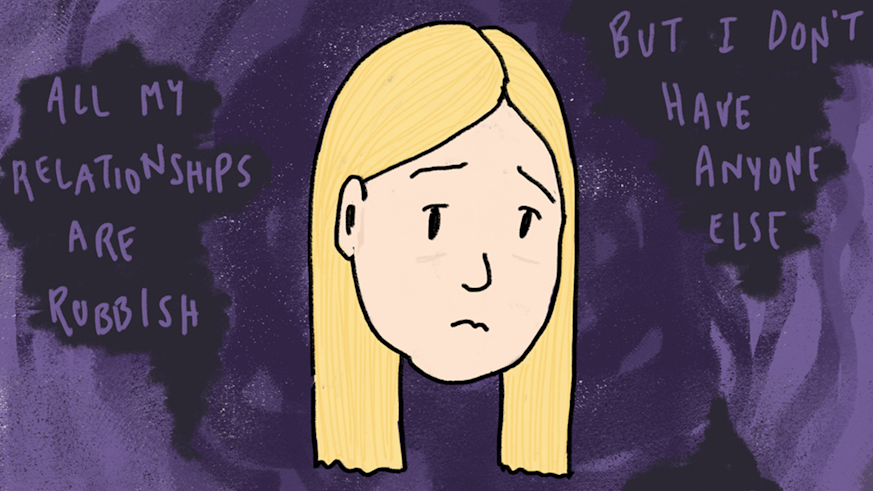
Listening to survivors of child sexual exploitation
Dr Sophie Hallett’s pioneering research has made young people’s views integral to decisions on their care.
“It’s been inspiring seeing how the views of young people have transformed policy and practice guidance. That’s what makes me keep doing what I’m doing.”
Dr Sophie Hallett’s research into child sexual exploitation has changed the way social workers and policy makers view and address this complex form of abuse.
The term ‘child sexual exploitation’, or CSE, was only formally introduced to UK safeguarding policy in 2009. Still a relatively new term, there was a lack of awareness about what constitutes it, what can be done to prevent children from harm and what support should be offered to those affected.
Dr Sophie Hallett’s research filled this knowledge gap by exploring what CSE is, and how best to intervene and prevent it.
Her ground-breaking research began as part of her master’s degree dissertation.
“The term ‘child sexual exploitation’ had only just been introduced to policy back then. It was still referred to as child prostitution,” says Dr Hallett. “The way it was explained to me initially was that it is adult strangers grooming children, but I began reading into it further. I realised there was a real gap in knowledge and understanding about how young people experience this form of abuse. There was also a stark lack of young people’s voices in any of the literature I read.”
Dr Hallett’s PhD, and research that followed, would be the catalyst for major discussions around how effectively, those tasked with caring for young people, were addressing CSE. Crucially, it was one of the first academic research studies of its kind to seek the views of young people experiencing it, as well as practitioners and other professionals.
“Children’s rights is something that is very important to me,” she says. “And part of that is ensuring young people’s representation in policy and practice as well as in their care. I had come to realise that the individuals who have experienced this abuse were absent from policy and were not featuring in the discussion. I wanted to change that.”
Working with young people
For her PhD, Dr Hallett spent 18 months embedded with a specialist CSE service one day a week.
The study involved interviews with a range of professionals from policy, youth work, social services, youth justice and, importantly, young people who had experiences of sexual exploitation.
Dr Hallett shares how significant consideration went into the ethics of undertaking this research.
“This is certainly a topic that people find difficult to talk about, least of all with the people who are directly affected by sexual exploitation,” she says. “Before I carried out this research, I’d had debates with academics and some from the care sector who argued that interviewing young people for research purposes, was in itself, exploitation.
“But my argument has always been, what are we saying to young people about their experiences if we’re unwilling to hear what they’ve got to say? What are we saying about young people if we do not think their perspectives are crucial to policies that shape theirs and others lives? I wanted to get the views of a range of people involved in caring for young people – I didn’t believe it was right to exclude young people from these dialogues.
“I thought a lot about how I could shape the study and also gather their views in a way that made sure they were in control of what they shared and that didn’t do them harm. That’s why it was really important to spend a lot of time in the service, so that I was visible to the young people, they could see who I was and I was available to answer any questions they had. Rather than me putting pressure on them, I let them come to me and find out about my work.
“After many initial discussions and as long as the young people were comfortable to take part in my research, we would proceed. But they could withdraw their consent to take part of their interview at any time.”
Gathering opinions to help others
Dr Hallett used a range of creative methods to draw out young people’s views. Using stories and word cards, they were invited to give their views on what they thought was important or happening and why.
“I was very clear with them about what the research was about, what questions I would be asking them – and what I wouldn’t be asking them. I wasn’t there for them to recount traumatic experiences – unless they wanted to share that as part of expressing their views. I was asking their views about why this abuse happens and opinions on the care system – what do we need to know and what is important about what can help.”
“I also felt it was important to go back to them afterwards to show them how their interviews had been used. It was important that they felt it was a positive experience.”
She admits, “Some of the young people’s stories were hard to hear. One told me, ‘nobody has ever done anything to help me.’
“One of the first people I interviewed was in a Young Offenders’ Institution and had been sexually exploited since she was 12. I remember her looking at me saying, ‘is this going to help other young people?’. I feel a responsibility to honour that request. These young people have told me things because they wanted to help stop this abuse happening.”
Revealing new complexities
Dr Hallett admits she was concerned by her initial findings, once she had analysed the common themes coming out from the interviews.
“The thing that stood out to me very quickly was that the young people’s experiences of CSE were very different to how it was being reported,” she says.
Dr Hallett’s research concluded that CSE is a much wider and complex problem than originally thought. It also found it is distinct from other forms of child sexual abuse in involving an element of exchange, including when a child exchanges sex for something tangible, such as money or a safe place to stay. It can also involve a child’s emotional needs being met in some way.
“The element of exchange was not being recognised at all – the fact that those exploiting young people were meeting an unmet need. It became quickly apparent that young people were more vulnerable to being exploited if their wellbeing wasn’t being thought about. All the young people referred to their abusers as ‘taking advantage’ of their need or their circumstances. Worryingly, the people meant to support and care for them were talked about in similar ways to those abusing them.
“I’ll always remember a quote from a young person that stands for what all the young people were saying. They said that ‘CSE doesn’t just happen, it happens because young people don’t get the help they need’. They don’t have any support, or they feel invisible to carers, family and others around them.
“My work also showed that this form of abuse had become synonymous with ‘grooming’, which frames children and young people as the passive victims of predatory adult perpetrators.
“But this understanding has serious implications in terms of how authorities respond to child exploitation. The reality is much more complex than that, this over-simplification to one scenario can silence those young people whose experiences do not fit the grooming model. Exploitation can happen in many different situations. The tendency to link CSE with only grooming means that cases are missed.
“Many young people knew they were being abused but the person was also meeting some kind of need that was there already. Abusers are not always adults, they might be a peer and they aren’t always someone unknown to them, they could be a family member.
“Some talked about ‘an uncomfortable comfortableness’ – for example, they’d say, at least they had housing, or someone was meeting a drug addiction, or someone was making them feel protected sometimes. It was often about the young people being exploited as they found ways to cope with their difficult lives, they had no choice because no one else was there for them. It was this point that they all wanted people to understand.”
Dr Hallett’s initial research was expanded further in 2019 in her ‘Keeping Safe’ report, the first UK, in-depth study of its kind. Tracking a cohort of young people across a decade – from the year CSE was first recognised – it detailed the common factors which make young people more likely to be vulnerable to exploitation. These included a lack of stable accommodation, previous experience of abuse and a lack of a supportive peer network.
She explains, “There has often been a lot of emphasis on young people’s risky behaviours as a way of keeping them safe. It might lead to measures such as the young person being stopped from seeing friends, or having their phone taken away – but it would lead them to feel they were being punished.
“It came with good intentions – carers are trying to protect the young person from harm. But by putting the emphasis on what young people were doing ‘wrong’, it wasn’t doing anything to respond to their care and support needs or sustain safety in the longer term. And until you consider that, you can’t tackle the problem. Take the young person away from the situation and all those needs and feelings of invisibility just follow them.”

Changing practice and improving support
Dr Hallett has worked to communicate these findings to a large audience – working with policymakers and practitioners in Wales, England and Australia to educate them about CSE.
Following her 2017 review of policy in Wales, Dr Hallett chaired the Welsh Government’s task and finish group assigned with developing a new CSE definition, guidance, and assessment protocol. The new definition directly references her key research findings and, unlike the older definition, states that an element of exchange is fundamental to this kind of abuse.
A professional working in CSE intervention in Wales, themselves a survivor of exploitation, said, “Dr Hallett’s work has been instrumental in making a positive change from the systemic victim blaming issues in practice and policy around child sexual exploitation frameworks in the past, to those of proper understanding and care for victims … this work means the world to me. It added recognition of my experience and that of the peers I had that were going through the same thing, and supported practices that were more appropriate and effective to the intervention and were not harmful to a young person.”
By filling knowledge gaps on CSE, her work informed both effective prevention and early intervention. Foster carer, Dan Oliver, noted that following Dr Hallett’s research, the improved understanding of CSE “put us in a much stronger position … to put in place the right level of support for young people, specifically teenage girls we look after in our role as foster carers. If it were not for this intervention, a number of young people would have ‘slipped through the net’ so to speak, and they would not have had the additional safeguarding measures, safety plans and support that they needed”.
Dr Hallett was commissioned in 2020 by Welsh Government to develop a suite of training modules on safeguarding young people. Multi-agency practitioners and foster carers reported positive changes they intended to make to their practice after the training. One participant wrote, “I will refocus my reporting and interviews on what matters to the child” and another said, “I will not let a meeting go ahead without ensuring the voice of the child can be present in the room.”
She has worked with various other organisations across safeguarding and law enforcement to communicate her research, leading to changes in practice, better prevention measures and increased support for young people.
Dr Hallett adds, “The power of hearing what young people have said – their own stories told from their viewpoints – is what has made a real difference with professionals.”

People
Related news stories
Publications
- Hallett, S. , Deerfield, K. and Hudson, K. 2019. The same but different? Exploring the links between gender, trauma, sexual exploitation and harmful sexual behaviours. Child Abuse Review 28 (6), pp.442-454. (10.1002/car.2591)
- Mannay, D. et al. 2019. Enabling talk and reframing messages: working creatively with care experienced children and young people to recount and re-represent their everyday experiences. Child Care in Practice 25 (1), pp.51-63. (10.1080/13575279.2018.1521375)
- Morrison, F. et al., 2019. Containment: exploring the concept of agency in children's statutory encounters with social workers. Childhood 26 (1), pp.98-112. (10.1177/0907568218810101)
- Winter, K. et al., 2019. Emotional labour in social workers' encounters with children and their families. British Journal of Social Work 49 (1), pp.217-233. (10.1093/bjsw/bcy016)
- Staples, E. et al. 2019. Enabling care-experienced young people’s participation in research: CASCADE Voices. In: Mannay, D. , Rees, A. and Roberts, L. eds. Children and Young People 'Looked After’? Education, Intervention and the Everyday Culture of Care in Wales. Cardiff: University of Wales Press
- Hallett, S. 2016. ‘An uncomfortable comfortableness’: ‘care’, child protection and child sexual exploitation. British Journal of Social Work 46 (7), pp.2137-2152. (10.1093/bjsw/bcv136)
- Hickle, K. and Hallett, S. 2016. Mitigating harm: considering harm reduction principles in work with sexually exploited young people. Children & Society 30 (4), pp.302-313. (10.1111/chso.12145)
- Mannay, D. et al. 2016. Exploring the educational experiences and aspirations of Looked After Children and Young People (LACYP) in Wales. Project Report.Cardiff: Children's Social Care and Research and Development Centre (CASCADE)
- Mannay, D. and Hallett, S. 2016. Reflecting on the educational experiences and opinions, attainment, achievement and aspirations of looked after children in Wales. Presented at: Looked After Children In Education: National Strategic Group (NSG) Cardiff, UK 9 March 2016.
- Mannay, D. et al. 2015. Executive summary: Understanding the educational experiences and opinions, attainment, achievement and aspirations of looked after children in Wales.. Technical Report.
- Hallett, S. 2013. Child sexual exploitation in South East Wales: problems and solutions from the perspectives of young people and professionals. PhD Thesis , Cardiff University.











